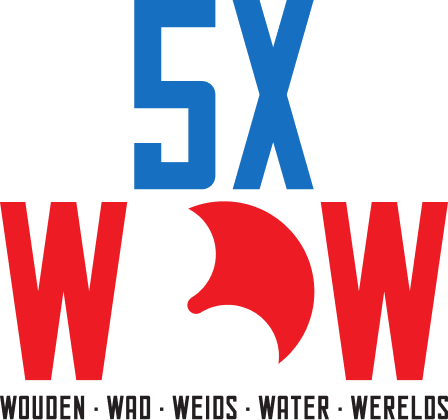Curious about the surroundings of the Wadden Sea World Heritage Site?
Since 2009, the Wadden Sea has been a UNESCO World Heritage Site. This cross-border area along the coasts of the Netherlands, Germany, and Denmark is full of pristine nature. The unique landscape of mudflats, salt marshes, dunes, channels, and sandbanks creates this one-of-a-kind Wadden area.
This route begins at the ‘t Fiskershúske museum in Moddergat (Fiskerspaad 4). From there, we will take you along the most important points that tell a beautiful and interesting story.
De route
Start route
Moddergat Friesland Nederland
Museum 't Fiskershuske
The fisherman's cottages of Museum 't Fiskershúske give you a glimpse into the lives of families on the Wadden Sea coast around 1850. The men were primarily fishermen, while the women were housewives and bait diggers on the mudflats. The cottages are now set up as if one family lived there, but usually, two families shared a single cottage.
Shipwreck Wierum / Peasens Moddergat
In 1883, nearly the entire male population of Paesens-Moddergat lost their lives at sea. The wrecks from this shipwreck are still being searched for. Seventeen out of twenty-two boats were lost during a great storm in March 1883. Of all those on board, only one person survived the disaster. Many orphans and widows were left behind in the village community.
Sense of place "Waiting for High Tide"
On the sea dike at Holwerd stands an artwork by artist Jan Ketelaar. The artwork consists of two metal-welded sculptures, each five meters high, depicting a thin woman and a thick woman. The sculptures gaze out over the Wadden Sea. The idea behind the artwork is the search for ‘balance and exchange’.
De "Terp of the Future"
The ‘Terp of the Future’ is a terp (artificial dwelling mound) built outside the dike near the village of Blija. In the past, the inhabitants lived with the sea. They fished on the mudflats, and the farmers worked the land outside the dike. Due to the raising of the seawall and the repurposing of the area into a nature reserve, Blija lost its connection with the sea. The Terp of the Future is a new outdoor experience area for the residents of the village.
Terp Hegebeintum
The small village of Hegebeintum is built on the highest terp in the world. The top of the terp is located 8.80 meters above sea level. The terp has been inhabited since 600 BC. After the construction of the first seawalls in the 19th century, many terps were (partially) excavated for fertile farmland, including the terp of Hegebeintum.
UNESCO World Heritage Wadden Sea
The Wadden Sea has been added to the UNESCO World Heritage List due to its globally unique geological and ecological characteristics. It is the largest tidal flats system in the world, stretching from Esbjerg in Denmark to Den Helder in the Netherlands. The sea is shallow, and the seabed is relatively flat, making the ecosystem highly dynamic.
Tibetan Buddhist temple
A Tibetan Buddhist stupa adorns the surroundings near Hantum. The 'Karma Deleg Chö Phel Ling' temple is situated in an extremely peaceful location amidst the fields of North Friesland. The stupa was founded by a Tibetan spiritual leader in 1986. It was the first Buddhist monastery in the Netherlands.
The Wadden and the salt marshes
The salt marshes along the Wadden Sea coast have formed through continuous sedimentation by the ebb and flow of tides. During high tide, these salt marshes are submerged, only to be exposed again at low tide. Salt marshes can be eroded by strong waves during storms. The landscape is constantly changing.
"Theater church" Nes
The Theater Church (Theaterkerk) was built in 1926 as a Reformed church. The building has the shape of a Greek cross. In 2018, the church was repurposed into a theater. The building offers opportunities for small concerts and performances, weddings, gatherings, and cultural events.
Einde route
Moddergat Friesland Nederland
